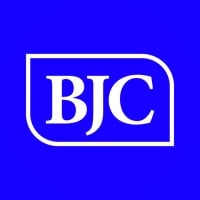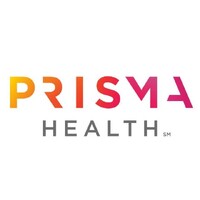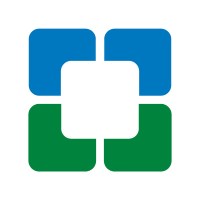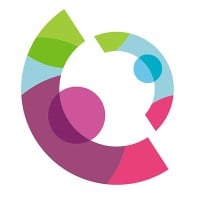
BJC Health System Company Cyber Security Posture
bjc.orgBJC Health System is one of the largest nonprofit health care organizations in the United States and the largest in the state of Missouri, serving urban, suburban, and rural communities across Missouri, southern Illinois, eastern Kansas, and the greater Midwest region. One of the largest employers in Missouri, BJC operates as BJC HealthCare in its Eastern Region and as Saint Luke’s Health System in its Western Region. BJC comprises 24 hospitals and hundreds of clinics and service organizations all committed to providing extraordinary patient care and advancing medical breakthroughs. BJC’s nationally recognized academic hospitals—Barnes-Jewish and St. Louis Children’s hospitals—are affiliated with Washington University School of Medicine.
BHS Company Details
bjc-health-system
27424 employees
62349.0
62
Hospitals and Health Care
bjc.org
Scan still pending
BJC_1600353
In-progress
Between 800 and 900
This score is AI-generated and less favored by cyber insurers, who prefer the TPRM score.
 BHS Global Score
BHS Global Score.png)

BJC Health System Company Scoring based on AI Models
| Model Name | Date | Description | Current Score Difference | Score |
|---|---|---|---|---|
| AVERAGE-Industry | 03-12-2025 | This score represents the average cybersecurity rating of companies already scanned within the same industry. It provides a benchmark to compare an individual company's security posture against its industry peers. | N/A | Between 800 and 900 |
BJC Health System Company Cyber Security News & History
| Entity | Type | Severity | Impact | Seen | Url ID | Details | View |
|---|---|---|---|---|---|---|---|
| BJC HealthCare | Breach | 60 | 4 | 03/2018 | BJC173710622 | Link | |
Rankiteo Explanation : Attack with significant impact with customers data leaksDescription: A security breach at BJC HealthCare left personal information on 33,420 patients potentially available to the public. The patients’ medical records, names, addresses, telephone numbers, dates of birth, Social Security numbers, driver's license numbers, and medical and insurance information were accessible through the Internet from May 9, 2017, to Jan. 23, 2018. It was because of a “data server configuration error, discovered during an internal security scan. | |||||||
| BJC HealthCare | Cyber Attack | 100 | 4 | 03/2020 | BJC13547222 | Link | |
Rankiteo Explanation : Attack with significant impact with customers data leaksDescription: The data from Missouri-based BJC Healthcare was compromised in a phishing attack. The email accounts of its three employees were impacted and a range of patient data was breached. Almost 19 affiliated hospitals were affected by the security incident on BJC healthcare. | |||||||
BJC Health System Company Subsidiaries

BJC Health System is one of the largest nonprofit health care organizations in the United States and the largest in the state of Missouri, serving urban, suburban, and rural communities across Missouri, southern Illinois, eastern Kansas, and the greater Midwest region. One of the largest employers in Missouri, BJC operates as BJC HealthCare in its Eastern Region and as Saint Luke’s Health System in its Western Region. BJC comprises 24 hospitals and hundreds of clinics and service organizations all committed to providing extraordinary patient care and advancing medical breakthroughs. BJC’s nationally recognized academic hospitals—Barnes-Jewish and St. Louis Children’s hospitals—are affiliated with Washington University School of Medicine.
Access Data Using Our API

Get company history
.png)
BHS Cyber Security News
Why Healthcare Needs More Than AI to Fight Cyber-Attacks
Matthew Maynard warns that healthcare has unique vulnerabilities that AI alone cannot solve.
2025 Health IT trends: Emerging technologies, AI remain prominent
Last year was busy for the health information technology sector, with a continued focus on artificial intelligence and a record number of cybersecurity ...
How a cyberattack against St. Louis-based Ascension is disrupting care at hospitals around the U.S.
With IT systems down, staff at Ascension have to use manual processes they left behind some 20 years ago. It's the latest in a string of ...
BJC HealthCare and Saint Luke's to form integrated Missouri-based health system
BJC HealthCare and Saint Luke's Health System have signed a letter of intent to form an integrated, academic, Missouri-based health system. The ...
BJC Health to spend $2.7M on email MFA access to settle breach affecting 288K patients
BJC Health has been defending itself against allegations that its poor cybersecurity policies and practices directly led to a 2020 phishing ...
Data Breach Settlement: BJC HealthCare Agrees to Put $2.7M Into Email Security
BJC HealthCare agreed to put $2.7 million toward implementing multifactor authentication (MFA) and other email security measures under the ...
Global tech outage takes hospital EHRs offline
The global outage is related to cybersecurity company CrowdStrike, which deployed a defect in an update for computers running Microsoft Windows.
BJC changing IV devices after First Alert 4 Investigation
For the first time, the BJC hospital system is confirming what they're calling “deployment challenges” with their new IV pumps.
BJC Healthcare data breach class action settlement
Affected consumers took legal action against BJC Healthcare, arguing the company could have prevented the data breach through reasonable ...

BHS Similar Companies

Prisma Health
Prisma Health is the largest not-for-profit health organization in South Carolina, serving more than 1.2 million patients annually. Our facilities in the Greenville and Columbia surrounding markets are dedicated to improving the health of all South Carolinians through improved clinical quality, acce

Nationwide Children's Hospital
Nationwide Children’s is one of America's largest pediatric hospitals, an international leader in research and is ranked in all 10 specialties on U.S. News & World Report’s 2024-25 “America’s Best Children’s Hospitals” list. Our staff, comprised of 1,600 medical professionals and over 15,000 employe

Cleveland Clinic
Cleveland Clinic, located in Cleveland, Ohio, is a not-for-profit, multispecialty academic medical center that integrates clinical and hospital care with research and education. Founded in 1921 by four renowned physicians with a vision of providing outstanding patient care based upon the principl

Levine Cancer
At Atrium Health, now part of Advocate Health, we’re driven to give all people access to the best cancer care available. Together, we are Atrium Health Levine Cancer – an integrated cancer program that unites cancer services at Atrium Health Levine Cancer Institute and Atrium Health Wake Forest

Cincinnati Children's
Cincinnati Children’s, a nonprofit academic medical center established in 1883, offers services from well-child care to treatment for the most rare and complex conditions. It is the Department of Pediatrics at the University of Cincinnati College of Medicine and trains more than 600 residents and cl

Medtronic Digital Surgery
Touch Surgery™ from Medtronic helps surgeons and health systems deliver consistent and high-quality surgery through AI, data and visualization. The Touch Surgery™ ecosystem consists of mobile-based education, as well as data and analytics. The Touch Surgery™ app, the world’s first academ

Frequently Asked Questions (FAQ) on Cybersecurity Incidents
BHS CyberSecurity History Information
Total Incidents: According to Rankiteo, BHS has faced 2 incidents in the past.
Incident Types: The types of cybersecurity incidents that have occurred include ['Breach', 'Cyber Attack'].
Total Financial Loss: The total financial loss from these incidents is estimated to be {total_financial_loss}.
Cybersecurity Posture: The company's overall cybersecurity posture is described as BJC Health System is one of the largest nonprofit health care organizations in the United States and the largest in the state of Missouri, serving urban, suburban, and rural communities across Missouri, southern Illinois, eastern Kansas, and the greater Midwest region. One of the largest employers in Missouri, BJC operates as BJC HealthCare in its Eastern Region and as Saint Luke’s Health System in its Western Region. BJC comprises 24 hospitals and hundreds of clinics and service organizations all committed to providing extraordinary patient care and advancing medical breakthroughs. BJC’s nationally recognized academic hospitals—Barnes-Jewish and St. Louis Children’s hospitals—are affiliated with Washington University School of Medicine..
Detection and Response: The company detects and responds to cybersecurity incidents through {description_of_detection_and_response_process}.
Incident Details
Incident 1: Ransomware Attack
Title: {Incident_Title}
Description: {Brief_description_of_the_incident}
Date Detected: {Detection_Date}
Date Publicly Disclosed: {Disclosure_Date}
Date Resolved: {Resolution_Date}
Type: {Type_of_Attack}
Attack Vector: {Attack_Vector}
Vulnerability Exploited: {Vulnerability}
Threat Actor: {Threat_Actor}
Motivation: {Motivation}
Incident 2: Data Breach
Title: {Incident_Title}
Description: {Brief_description_of_the_incident}
Date Detected: {Detection_Date}
Date Publicly Disclosed: {Disclosure_Date}
Date Resolved: {Resolution_Date}
Type: {Type_of_Attack}
Attack Vector: {Attack_Vector}
Vulnerability Exploited: {Vulnerability}
Threat Actor: {Threat_Actor}
Motivation: {Motivation}
Common Attack Types: As of now, the company has not encountered any reported incidents involving common cyberattacks.
Identification of Attack Vectors: The company identifies the attack vectors used in incidents through {description_of_identification_process}.
Impact of the Incidents
Incident 1: Ransomware Attack
Financial Loss: {Financial_Loss}
Data Compromised: {Data_Compromised}
Systems Affected: {Systems_Affected}
Downtime: {Downtime}
Operational Impact: {Operational_Impact}
Conversion Rate Impact: {Conversion_Rate_Impact}
Revenue Loss: {Revenue_Loss}
Customer Complaints: {Customer_Complaints}
Brand Reputation Impact: {Brand_Reputation_Impact}
Legal Liabilities: {Legal_Liabilities}
Identity Theft Risk: {Identity_Theft_Risk}
Payment Information Risk: {Payment_Information_Risk}
Incident 2: Data Breach
Financial Loss: {Financial_Loss}
Data Compromised: {Data_Compromised}
Systems Affected: {Systems_Affected}
Downtime: {Downtime}
Operational Impact: {Operational_Impact}
Conversion Rate Impact: {Conversion_Rate_Impact}
Revenue Loss: {Revenue_Loss}
Customer Complaints: {Customer_Complaints}
Brand Reputation Impact: {Brand_Reputation_Impact}
Legal Liabilities: {Legal_Liabilities}
Identity Theft Risk: {Identity_Theft_Risk}
Payment Information Risk: {Payment_Information_Risk}
Average Financial Loss: The average financial loss per incident is {average_financial_loss}.
Commonly Compromised Data Types: The types of data most commonly compromised in incidents are {list_of_commonly_compromised_data_types}.
Incident 1: Ransomware Attack
Entity Name: {Entity_Name}
Entity Type: {Entity_Type}
Industry: {Industry}
Location: {Location}
Size: {Size}
Customers Affected: {Customers_Affected}
Incident 2: Data Breach
Entity Name: {Entity_Name}
Entity Type: {Entity_Type}
Industry: {Industry}
Location: {Location}
Size: {Size}
Customers Affected: {Customers_Affected}
Response to the Incidents
Incident 1: Ransomware Attack
Incident Response Plan Activated: {Yes/No}
Third Party Assistance: {Yes/No}
Law Enforcement Notified: {Yes/No}
Containment Measures: {Containment_Measures}
Remediation Measures: {Remediation_Measures}
Recovery Measures: {Recovery_Measures}
Communication Strategy: {Communication_Strategy}
Adaptive Behavioral WAF: {Adaptive_Behavioral_WAF}
On-Demand Scrubbing Services: {On_Demand_Scrubbing_Services}
Network Segmentation: {Network_Segmentation}
Enhanced Monitoring: {Enhanced_Monitoring}
Incident 2: Data Breach
Incident Response Plan Activated: {Yes/No}
Third Party Assistance: {Yes/No}
Law Enforcement Notified: {Yes/No}
Containment Measures: {Containment_Measures}
Remediation Measures: {Remediation_Measures}
Recovery Measures: {Recovery_Measures}
Communication Strategy: {Communication_Strategy}
Adaptive Behavioral WAF: {Adaptive_Behavioral_WAF}
On-Demand Scrubbing Services: {On_Demand_Scrubbing_Services}
Network Segmentation: {Network_Segmentation}
Enhanced Monitoring: {Enhanced_Monitoring}
Incident Response Plan: The company's incident response plan is described as {description_of_incident_response_plan}.
Third-Party Assistance: The company involves third-party assistance in incident response through {description_of_third_party_involvement}.
Data Breach Information
Incident 2: Data Breach
Type of Data Compromised: {Type_of_Data}
Number of Records Exposed: {Number_of_Records}
Sensitivity of Data: {Sensitivity_of_Data}
Data Exfiltration: {Yes/No}
Data Encryption: {Yes/No}
File Types Exposed: {File_Types}
Personally Identifiable Information: {Yes/No}
Prevention of Data Exfiltration: The company takes the following measures to prevent data exfiltration: {description_of_prevention_measures}.
Handling of PII Incidents: The company handles incidents involving personally identifiable information (PII) through {description_of_handling_process}.
Ransomware Information
Incident 1: Ransomware Attack
Ransom Demanded: {Ransom_Amount}
Ransom Paid: {Ransom_Paid}
Ransomware Strain: {Ransomware_Strain}
Data Encryption: {Yes/No}
Data Exfiltration: {Yes/No}
Ransom Payment Policy: The company's policy on paying ransoms in ransomware incidents is described as {description_of_ransom_payment_policy}.
Data Recovery from Ransomware: The company recovers data encrypted by ransomware through {description_of_data_recovery_process}.
Regulatory Compliance
Incident 1: Ransomware Attack
Regulations Violated: {Regulations_Violated}
Fines Imposed: {Fines_Imposed}
Legal Actions: {Legal_Actions}
Regulatory Notifications: {Regulatory_Notifications}
Incident 2: Data Breach
Regulations Violated: {Regulations_Violated}
Fines Imposed: {Fines_Imposed}
Legal Actions: {Legal_Actions}
Regulatory Notifications: {Regulatory_Notifications}
Regulatory Frameworks: The company complies with the following regulatory frameworks regarding cybersecurity: {list_of_regulatory_frameworks}.
Ensuring Regulatory Compliance: The company ensures compliance with regulatory requirements through {description_of_compliance_measures}.
Lessons Learned and Recommendations
Incident 1: Ransomware Attack
Lessons Learned: {Lessons_Learned}
Incident 2: Data Breach
Lessons Learned: {Lessons_Learned}
Incident 1: Ransomware Attack
Recommendations: {Recommendations}
Incident 2: Data Breach
Recommendations: {Recommendations}
Key Lessons Learned: The key lessons learned from past incidents are {list_of_key_lessons_learned}.
Implemented Recommendations: The company has implemented the following recommendations to improve cybersecurity: {list_of_implemented_recommendations}.
References
Additional Resources: Stakeholders can find additional resources on cybersecurity best practices at {list_of_additional_resources}.
Investigation Status
Incident 1: Ransomware Attack
Investigation Status: {Investigation_Status}
Incident 2: Data Breach
Investigation Status: {Investigation_Status}
Communication of Investigation Status: The company communicates the status of incident investigations to stakeholders through {description_of_communication_process}.
Stakeholder and Customer Advisories
Incident 1: Ransomware Attack
Stakeholder Advisories: {Stakeholder_Advisories}
Customer Advisories: {Customer_Advisories}
Incident 2: Data Breach
Stakeholder Advisories: {Stakeholder_Advisories}
Customer Advisories: {Customer_Advisories}
Advisories Provided: The company provides the following advisories to stakeholders and customers following an incident: {description_of_advisories_provided}.
Initial Access Broker
Incident 1: Ransomware Attack
Entry Point: {Entry_Point}
Reconnaissance Period: {Reconnaissance_Period}
Backdoors Established: {Backdoors_Established}
High Value Targets: {High_Value_Targets}
Data Sold on Dark Web: {Yes/No}
Incident 2: Data Breach
Entry Point: {Entry_Point}
Reconnaissance Period: {Reconnaissance_Period}
Backdoors Established: {Backdoors_Established}
High Value Targets: {High_Value_Targets}
Data Sold on Dark Web: {Yes/No}
Monitoring and Mitigation of Initial Access Brokers: The company monitors and mitigates the activities of initial access brokers through {description_of_monitoring_and_mitigation_measures}.
Post-Incident Analysis
Incident 1: Ransomware Attack
Root Causes: {Root_Causes}
Corrective Actions: {Corrective_Actions}
Incident 2: Data Breach
Root Causes: {Root_Causes}
Corrective Actions: {Corrective_Actions}
Post-Incident Analysis Process: The company's process for conducting post-incident analysis is described as {description_of_post_incident_analysis_process}.
Corrective Actions Taken: The company has taken the following corrective actions based on post-incident analysis: {list_of_corrective_actions_taken}.
Additional Questions
General Information
Ransom Payment History: The company has {paid/not_paid} ransoms in the past.
Last Ransom Demanded: The amount of the last ransom demanded was {last_ransom_amount}.
Last Attacking Group: The attacking group in the last incident was {last_attacking_group}.
Incident Details
Most Recent Incident Detected: The most recent incident detected was on {most_recent_incident_detected_date}.
Most Recent Incident Publicly Disclosed: The most recent incident publicly disclosed was on {most_recent_incident_publicly_disclosed_date}.
Most Recent Incident Resolved: The most recent incident resolved was on {most_recent_incident_resolved_date}.
Impact of the Incidents
Highest Financial Loss: The highest financial loss from an incident was {highest_financial_loss}.
Most Significant Data Compromised: The most significant data compromised in an incident was {most_significant_data_compromised}.
Most Significant System Affected: The most significant system affected in an incident was {most_significant_system_affected}.
Response to the Incidents
Third-Party Assistance in Most Recent Incident: The third-party assistance involved in the most recent incident was {third_party_assistance_in_most_recent_incident}.
Containment Measures in Most Recent Incident: The containment measures taken in the most recent incident were {containment_measures_in_most_recent_incident}.
Data Breach Information
Most Sensitive Data Compromised: The most sensitive data compromised in a breach was {most_sensitive_data_compromised}.
Number of Records Exposed: The number of records exposed in the most significant breach was {number_of_records_exposed}.
Ransomware Information
Highest Ransom Demanded: The highest ransom demanded in a ransomware incident was {highest_ransom_demanded}.
Highest Ransom Paid: The highest ransom paid in a ransomware incident was {highest_ransom_paid}.
Regulatory Compliance
Highest Fine Imposed: The highest fine imposed for a regulatory violation was {highest_fine_imposed}.
Most Significant Legal Action: The most significant legal action taken for a regulatory violation was {most_significant_legal_action}.
Lessons Learned and Recommendations
Most Significant Lesson Learned: The most significant lesson learned from past incidents was {most_significant_lesson_learned}.
Most Significant Recommendation Implemented: The most significant recommendation implemented to improve cybersecurity was {most_significant_recommendation_implemented}.
References
Most Recent Source: The most recent source of information about an incident is {most_recent_source}.
Most Recent URL for Additional Resources: The most recent URL for additional resources on cybersecurity best practices is {most_recent_url}.
Investigation Status
Current Status of Most Recent Investigation: The current status of the most recent investigation is {current_status_of_most_recent_investigation}.
Stakeholder and Customer Advisories
Most Recent Stakeholder Advisory: The most recent stakeholder advisory issued was {most_recent_stakeholder_advisory}.
Most Recent Customer Advisory: The most recent customer advisory issued was {most_recent_customer_advisory}.
Initial Access Broker
Most Recent Entry Point: The most recent entry point used by an initial access broker was {most_recent_entry_point}.
Most Recent Reconnaissance Period: The most recent reconnaissance period for an incident was {most_recent_reconnaissance_period}.
Post-Incident Analysis
Most Significant Root Cause: The most significant root cause identified in post-incident analysis was {most_significant_root_cause}.
Most Significant Corrective Action: The most significant corrective action taken based on post-incident analysis was {most_significant_corrective_action}.
What Do We Measure?
















Every week, Rankiteo analyzes billions of signals to give organizations a sharper, faster view of emerging risks. With deeper, more actionable intelligence at their fingertips, security teams can outpace threat actors, respond instantly to Zero-Day attacks, and dramatically shrink their risk exposure window.
These are some of the factors we use to calculate the overall score:
Identify exposed access points, detect misconfigured SSL certificates, and uncover vulnerabilities across the network infrastructure.
Gain visibility into the software components used within an organization to detect vulnerabilities, manage risk, and ensure supply chain security.
Monitor and manage all IT assets and their configurations to ensure accurate, real-time visibility across the company's technology environment.
Leverage real-time insights on active threats, malware campaigns, and emerging vulnerabilities to proactively defend against evolving cyberattacks.




